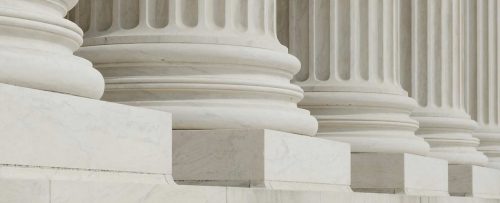
News & Events | CWP Admin
Advocates Strive for Workers’ Compensation and Benefits
January 18, 2017
January 18, 2017
CWP Admin
News & Events
In October 2000, Congress enacted the Energy Employees Occupational Illness Compensation Program Act (EEOICPA), which was designed to recognize and compensate current or former workers (or their survivors) of the Department of Energy (DOE), its predecessor agencies and certain vendors, contractors or subcontractors who contracted illnesses due to radiation or toxic exposure at their place of work.
Since the program went into effect in 2001, approximately 286,899 claim applications have been filed under Part B and/or Part E. Of these claims approximately 108,057 received compensation. So simply filing a claim does not guarantee that it will be approved.
However, there are a number of people involved with the EEOICPA program whose purpose is to assist claimants. This assistance comes in many forms, including advocate organizations, ombudsman administered by the federal government and authorized representatives who represent individual claimants.
Examples of advocate organizations include Cold War Patriots, Alliance of Nuclear Worker Advocacy Groups, Tri-Valley CAREs, and the Energy Employees Compensation Assistance Program, to name a few. These groups are more involved with the overall implementation of the EEOICPA program by the federal agencies who administer them – the U.S. Department of Labor (DOL), National Institute for Occupational Safety and Health (NIOSH) and the Department of Energy (DOE). The advocacy groups monitor changes to the policy and procedures that affect individual claims and share that knowledge with the stakeholders.
The two federal entities who assist claimants are:
- EEOICPA Ombudsman, Malcolm Nelson
The EEOICPA Ombudsman’s office was created in 2004 and provides information and addresses concerns of claimants and potential claimants relating to benefits available under the EEOICPA. The office also submits an annual report to Congress which highlights the amount and types of complaints, as well as the grievances and requests for assistance received by the office. The Ombudsman’s office encourages claimants or potential claimants with questions or concerns to contact their office via phone at 1-877-662-8363 or email [email protected].
- NIOSH Ombudsman, Denise Brock The NIOSH Ombudsman helps with a variety of issues regarding the Special Exposure Cohort (SEC) petition process and the dose reconstruction process. Ms. Brock can be contacted at 1-888-272-7430 or email [email protected].
One last group that gets little attention for their work on behalf of claimants are the people who petition NIOSH to include a nuclear weapons site in the Special Exposure Cohort (SEC). The Special Exposure Cohort legislation specifies that an employee who worked at a site with SEC status will not need to go through dose reconstruction if he or she has one of the twenty-two cancers specified in the legislation. As of November 30, 2016, 236 individual claimants or unions have filed petitions. Some were successful, others were not. Yet, thousands of claimants benefited from one individual or union filing the petition.
There are many reasons that these petitioners deserve kudos for their work. Many of them are former workers or former worker’s family members. Most of them do not have formal legal training. The SEC petition process can be a daunting task if NIOSH puts forth a position that they can reconstruct dose for the site.
Once NIOSH issues its Evaluation Report, which can run as much as 100 pages or more, the petitioner may have to provide additional evidence to the various Advisory Board on Radiation and Worker Health Work Group meetings if the report was not in the petitioner’s favor.
Finding evidence to oppose NIOSH’s position entails hours and hours of research by the petitioners themselves or with the assistance of individuals they designate as a co-petitioner or authorized representative. They contact former workers from the site to obtain testimony and perhaps even documents. More hours are spent listening to and participating in the Work Group meetings and reading more reports from NIOSH and the Board’s technical contractor.
The Board also allows time during their quarterly in-person meetings so that the petitioner can present their position and arguments to the full Board either in person or over the phone. This presentation takes an enormous amount of time to compile the newly found documents, identify any inconsistencies in NIOSH’s position and present that information in a clear and concise manner within the ten minutes allowed.
In conclusion, while not all petitions are approved, the mere filing of the petition forces NIOSH and the Board to review the current methodology NIOSH uses to reconstruct dose for a particular site. Oftentimes, that methodology is revised and additional claimants can qualify for compensation under dose reconstruction.
Hats off to all these advocates and organizations for their commitment to former and current nuclear weapons workers or their survivors by helping to ensure they receive the benefits they have earned.
For more information Special Exposure Cohorts (SEC), advocate organizations or ombudsman services, please contact the Cold War Patriots Help Center at 1.888.903.8989.
